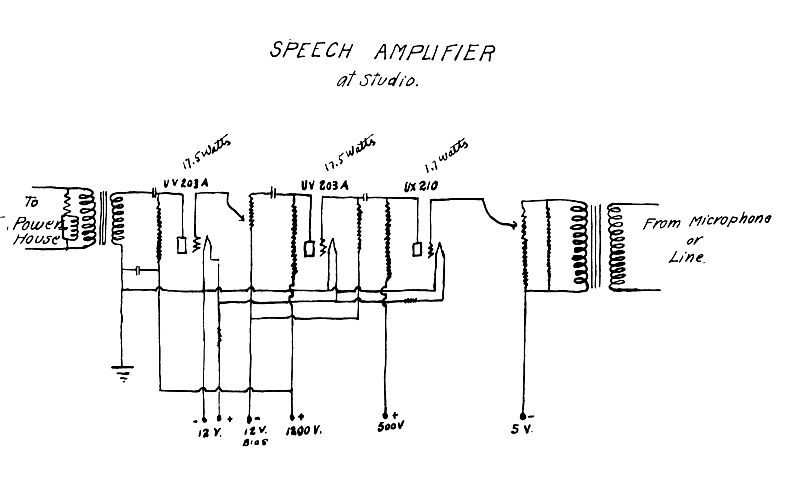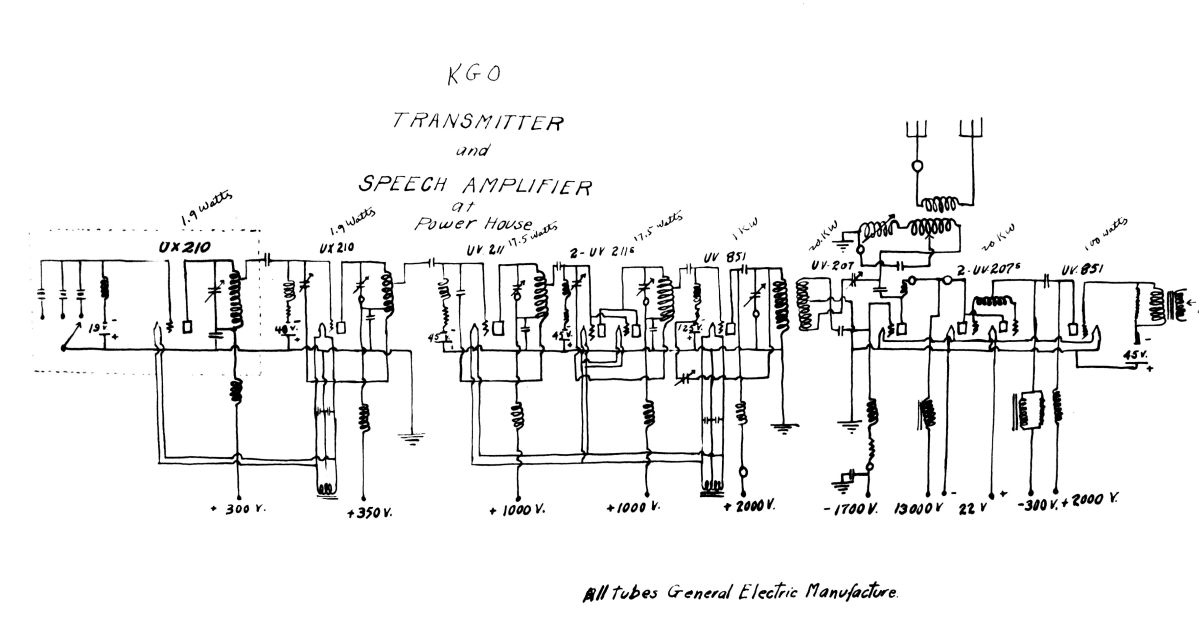KGO Transmitter
Circuit Diagram, 1929
Here is a detail description of the equipment for our "technically-minded" readers:




At the transmitter "power house": The carrier signal (790 kHz) is generated by the crystal oscillator at far left. There is a choice of three crystals, which were housed in a temperature-stable thermostat-controlled enclosure. This is followed by four stages of RF amplification, produce a 1 kW drive signal. The final RF amplifier is a single water-cooled UV-207, rated at 20 kW, which operated as a Class "A" power amplifier to produce a carrier power of 7,500 watts. The audio signal from the studio building, which enters at the right, passes through one buffer stage to a pair of UV-207 modulator tubes. Heising ("constant current") modulation is used. The antenna is inductively coupled, and fed at both ends in a unique "multiple-tuned" configuration.